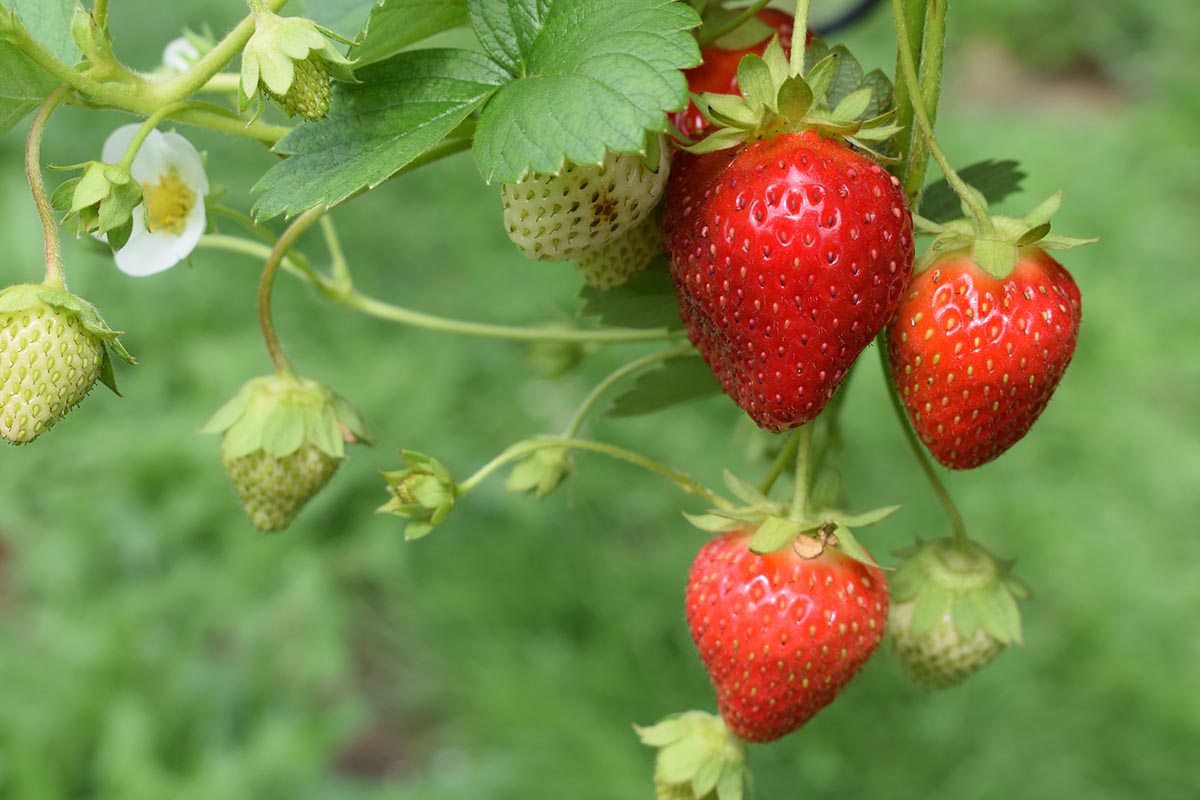![[eBook] Sustainable horticultural twine and baling twine solutions](https://agriplasticscommunity.com/wp-content/uploads/7_550x310_ENG-150x150.png)
![[eBook] Sustainable horticultural twine and baling twine solutions](https://agriplasticscommunity.com/wp-content/uploads/7_550x310_ENG-150x150.png)
![[eBook] Sustainable horticultural twine and baling twine solutions](https://agriplasticscommunity.com/wp-content/uploads/7_550x310_ENG-150x150.png)


One way to ensure the sustainability and viability of plantations is to carry out adequate pest and weed control, otherwise, it’s very likely that the land chosen for cultivation, especially of fruits and vegetables, will suffer severe damage and become unproductive.
In the specific case of strawberry cultivation, several strategies can be implemented to prevent weed growth and make the crop thrive and take root. In this article, we will talk about how to control pests in strawberry crops through the use of biodegradable mulching.
There are several ways to grow strawberries, one of them is using a production system through tangled rows where the plants are planted 15 to 40 cm apart in the row, while the stems of the transplants are filled in the rest of the space of the row. Row spacing can vary from approximately 25 to 50 cm from centre to centre (these planting distances will depend on variety, soil type, climate, irrigation, …).
However, farmers who plant through this system encounter the great challenge that freshly planted strawberries tend to be more susceptible to competition from weeds, especially during the first two months after planting. There can even be a considerable decrease in crop yield when weeds are not controlled at the beginning of the season.
Controlling weeds is certainly one of the main concerns of agricultural producers. One way to protect the growing land, especially against the winter cold and the incidence of pests and weeds, has traditionally been the application of wheat, rye or barley straw when the autumn season ends. Today, biodegradable agricultural plastics specially designed for that purpose are used.
Producers should be aware that new plantings don’t cover the ground until the second season, and that weed competition within the rows can inhibit stand establishment and reduce future yields. The key is to find the most effective way to control pests and weeds in the early period of new plantings to guarantee long-term sustainability.
Some prefer to use herbicides for control, although, today, there are very few options available that have residual qualities capable of generating a more lasting effect to prevent weed incidence in the year of establishment and yield reduction in future seasons. In addition, year after year, legislative restrictions on access to these chemical herbicide treatments are increasing. Therefore, many producers are turning to the use of biodegradable mulching to control pests in strawberry crops.
The use of plastic films has a long history in agriculture and farmers use them to improve soil conditions and keep agents that can compromise crop integrity under control.
The most viable option, in this case, would be to use a biodegradable mulch to control pests in strawberry crops, since it’s more manageable and, by decomposing in an estimated 12 months from application, there is a greater probability of suppressing weeds during the critical part of the season and, at the same time, allowing the corridors to fill the row once the material degrades.
Additionally, when the winter season begins, straw can be applied as a way to accelerate the degradation process of the biodegradable mulch. This ensures a more complete and homogeneous degradation while guaranteeing a natural straw mulch for the second season.
For some years now, the campaigns to reduce the use of plastics and materials that contain them have increased, creating in the population an awareness that didn’t exist before. More agricultural producers are opting for more sustainable and environmentally friendly alternatives, as conventional polyethene options are unable to biodegrade over time.
The use of biodegradable mulch prevents the proliferation of weeds in strawberry crops, retains soil moisture better, improves soil structure considerably and maintains the quality of the final product grown. Technological innovation has allowed designing plastics that decompose organically and naturally in the soil, helping reduce environmental impact.
A relevant aspect when opting for biodegradable mulch in strawberry crops is the importance of preparing the soil very well because a greater or lesser yield of these plastics will depend on the actual conditions of the soil and the conditions created for it.
It’s necessary to avoid stones or sharp objects that could damage the mulch as well as to adapt the tension and the speed of application in the ground.
It’s also advisable to wait a reasonable time for organic fertilizers to dissipate a little, so their residues don’t compromise the integrity of the material by accelerating degradation.
By following these simple recommendations agricultural producers will obtain good harvest results, eliminating the removal and management process of plastic materials since this biodegradable mulch is broken down on the farm.
To know a little more about this topic, we recommend reading our article on the advantages, disadvantages and different applications of biodegradable plastics. Also, we have a webinar that can be very useful, where experts in the field address the issue of the benefits and profitability of biodegradable mulching.
Finally, we also invite you to read a study conducted on the efficiency of the use of plastic mulch in strawberry crops.